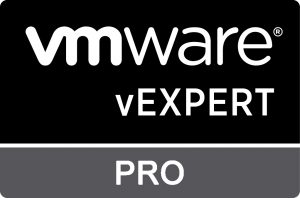Doing REST API calls via Powershell is straight forward using the Invoke-RestMethod cmdlet. Using the examples from inkysea’s blogpost, I’ll be showing how to do this calls to vRA using Powershell.
To start off, we need to define the header
$header = @{ "Accept" = "application/json"; "Content-Type" = "application/json" }
and the body payload
$body = @{
username = "account";
password= "password";
tenant = "vsphere.local"
}
After which, we define the URI/ vRA URL to pass the REST payload
$URI = "https://<VRA URL>/identity/api/tokens"
We then invoke the Invoke-RestMethod cmdlet
$token = Invoke-RestMethod -Method Post -Uri $uri -Headers $header -Body (ConvertTo-Json $body)
- ConvertTo-Json was done in $body variable because the REST call expects a JSON payload
- We save the response to $token variable as we need the ID/ authentication
Once completed, you will receive the TOKEN ID that we will be using to issue additional commands via REST.
NOTE: this ID expires after 24 hours. If you want to change the duration, this can be controlled via the property identity.basic.token.lifetime.hours=N of the /etc/vcac/security.properties file.
Once we have the token, we re-add the TOKEN ID in the header payload
$header.Add("Authorization", "Bearer " + $token.id)
Store the URI for the catalog service
$catalog = "https://<VRA URL>/catalog-service/api/consumer/entitledCatalogItems"
Invoke RestMethod cmdlet to get the Entitled Catalog item for the user
$response = Invoke-RestMethod -Method Get -Uri $catalog -Headers $header -UseDefaultCredentials:$false
- -UseDefaultCredential is needed as i keep getting authorization error (for some weird reason) so I had to hardcode this part
- $reponse would contain all entitled resource for the particular user
that’s it!
Enjoy!




